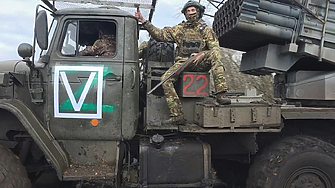

Момчи, направи този материал за лазерното оръдие и за електическата ракета. Първо съм ти принтнал статия от Си Ен Ен, а отдолу имаш и от още един друг сайт за оръжие. Компилирай от двете. Става готино четиво за събота. ако си готов в нормално време тази вечер ми го прати за редакция, ако не, утре сутрин е дежурна Мила.
Imagine ships that fire missiles at seven times the speed of sound without using explosives, or that use lasers to destroy threats at the cost of about a dollar a shot, and vessels making fuel from the very seawater in which they're floating.
That's the glimpse of the high-tech future the U.S. Navy gave this week. And these aren't just ideas. They've all been shown to work to some degree.
Saturday, the Navy will christen its most advanced warship ever, the destroyer USS Zumwalt, which may one day be using these new technologies.
The Zumwalt, which was launched last year and is to be christened at Bath Iron Works in Maine, is the Navy's first stealth destroyer. At 610 feet long and 80 feet wide, it's about 100 feet longer and 20 feet wider than ships in the Navy's current fleet of Arleigh Burke class destroyers, but the canopy and the rest of the Zumwalt is built on angles that help make it 50 times harder to spot on radar than an ordinary destroyer.
"It has the radar cross-section of a fishing boat," Chris Johnson, a spokesman for Naval Sea Systems Command, told CNN when the ship was launched last year.
In its current configuration, the Zumwalt will carry a considerable arsenal of weapons, including two Advanced Gun Systems (AGS), which can fire rocket-powered, computer-guided shells that can destroy targets 63 miles away. That's three times farther than ordinary destroyer guns can fire.
But in the future, it could be fitted with the even more advanced systems the Navy talked about this week.
One, a laser weapon prototype, will be tested aboard the amphibious transport dock USS Ponce in the Persian Gulf this summer, the Navy said.
"This is a revolutionary capability," Rear Adm. Matthew Klunder, chief of Naval Research, said in a statement. "This very affordable technology is going to change the way we fight and save lives."
The laser weapon is design to take on aircraft or small surface vessels that may pose threats to Navy ships. Tests in 2011 and 2012 showed it can accomplish that mission.
The laser can be fired by one sailor using a video game-like console and do it at little cost, the Navy said.
"Spending about $1 per shot of a directed-energy source that never runs out gives us an alternative to firing costly munitions at inexpensive threats," Klunder said.
The Navy thinks the other weapon prototype it discussed this week, the electromagnetic railgun, will save money while providing a more potent force.
"The electromagnetic railgun represents an incredible new offensive capability for the U.S. Navy," Rear Adm. Bryant Fuller, the Navy's chief engineer, said in a statement. "This capability will allow us to effectively counter a wide range of threats at a relatively low cost, while keeping our ships and sailors safer by removing the need to carry as many high-explosive weapons."The gun uses electromagnetic force to send a missile to a range of 125 miles at 7.5 times the speed of sound, according to the Navy. When it hits its target, the projectile does its damage with sheer speed. It does not have an explosive warhead.
The railgun projectiles could cost about 1/100th the price of current missiles, according to Klunder.
The Navy said the railgun will be tested at sea aboard the USS Millinocket, a non-combat ship known as a joint high-speed vessel, in 2016. No decision has been made on which combat ships might eventually be deployed with a railgun.
No matter what ships are chosen, other Navy scientists said this week those vessels may someday draw their fuel from the oceans they're crossing.
Researchers at the U.S. Naval Research Laboratory, Materials Science and Technology Division, said this week they have demonstrated proof-of-concept on the ability to draw carbon dioxide and hydrogen from seawater and turn it into forms of gasoline.
Heather Willauer, a Naval Research Laboratory chemist, called the technology "game changing."
"This is the first time technology of this nature has been demonstrated with the potential for transition, from the laboratory, to full-scale commercial implementation," she said in a statement.
The lab's researchers used "an innovative and proprietary NRL electrolytic cation exchange module" to remove the carbon dioxide from the water and produce hydrogen gas in the process.
"The gases are then converted to liquid hydrocarbons by a metal catalyst in a reactor system," the research lab's statement said.
The fuel produced was used to power the engine of a small model aircraft, the researchers said.
The process could be ramped up to produce a replacement for jet fuel at a cost of $3 to $6 per gallon within a decade, the researchers said. That step would come on land, with versions to be used on ships coming later, they said.
Writing on the Navy's official blog this week, Vice Adm. Phil Cullom, deputy chief of Naval Operations for Fleet Readiness and Logistics, also called the new technology "game changing" and potentially life saving.
"After more than a decade of war, our adversaries have found certain soft underbellies to our operations. They know that when you go after the logistics and resupply of fuel, that's an easier target than confronting our frontline forces. What if we removed that from the equation? Can you imagine a time when an aircraft carrier doesn't have to wait for the oiler to come steaming alongside it to deliver jet fuel? It truly does change things. It prevents what could one day be our 'maritime IED moment,'" Cullom wrote.
April 10, 2014 - The arms race doesn't just include railgun naval technology. Add to it a new laser weapon that will be going to sea in the Persian Gulf on the USS Ponce (pictured below) this summer.
Called LaWS, short for Laser Weapon System, it fires a directed energy beam at a target. The operator sits behind a video-game console and can choose a degree of intensity from disable the target to destroy it.
The U.S. Navy has been testing LaWS for three years. It has been used to disable everything from small boats to destroyer-sized ships. It has even downed unmanned test aircraft. If the summer sea trial works then the U.S. will deploy LaWS on a variety of ships in its fleet including guided-missile destroyers and the Littoral Combat Ship, the navy's newest stealth technology.
LaWS looks like a telescope. It uses fiber solid state lasers and is directed by an operator who coordinates targets using radar tracking systems.
aser weapon will be the first to be deployed on a ship
The U.S. Navy has announced that it will deploy a prototype laser weapon aboard a Navy ship later this summer. The announcement is confirmation of the Navy's plans that were announced almost exactly a year ago today. In April of 2013, the Navy promised that it would be ready for shipboard testing of laser weapons by this summer.
The prototype laser that will be deployed is an improved version of the Laser Weapon System known as LaWS. The laser will be installed on the USS Ponce for at-sea testing in the Persian Gulf.
“This is a revolutionary capability,” said Chief of Naval Research Rear Adm. Matthew Klunder. “It’s absolutely critical that we get this out to sea with our sailors for these trials, because this very affordable technology is going to change the way we fight and save lives.”
Navy officials say that the laser weapon is a top priority to counter asymmetric threats like unmanned and light aircraft as well as small attack boats. The major benefits of laser weapons include that they have an “unlimited” magazine and attacks at the speed of light.
“Our nation’s adversaries are pursuing a variety of ways to try and restrict our freedom to operate,” Klunder said. “Spending about $1 per shot of a directed-energy source that never runs out gives us an alternative to firing costly munitions at inexpensive threats.”
Sailors control the laser system using a game-like controller to target a range of threats and control whether the treat is disabled or destroyed. The Navy currently has three prototypes and will determine which of the three is most suitable to move forward next year.

Подкрепете ни
Уважаеми читатели, вие сте тук и днес, за да научите новините от България и света, и да прочетете актуални анализи и коментари от „Клуб Z“. Ние се обръщаме към вас с молба – имаме нужда от вашата подкрепа, за да продължим. Вече години вие, читателите ни в 97 държави на всички континенти по света, отваряте всеки ден страницата ни в интернет в търсене на истинска, независима и качествена журналистика. Вие можете да допринесете за нашия стремеж към истината, неприкривана от финансови зависимости. Можете да помогнете единственият поръчител на съдържание да сте вие – читателите.
Подкрепете ни





